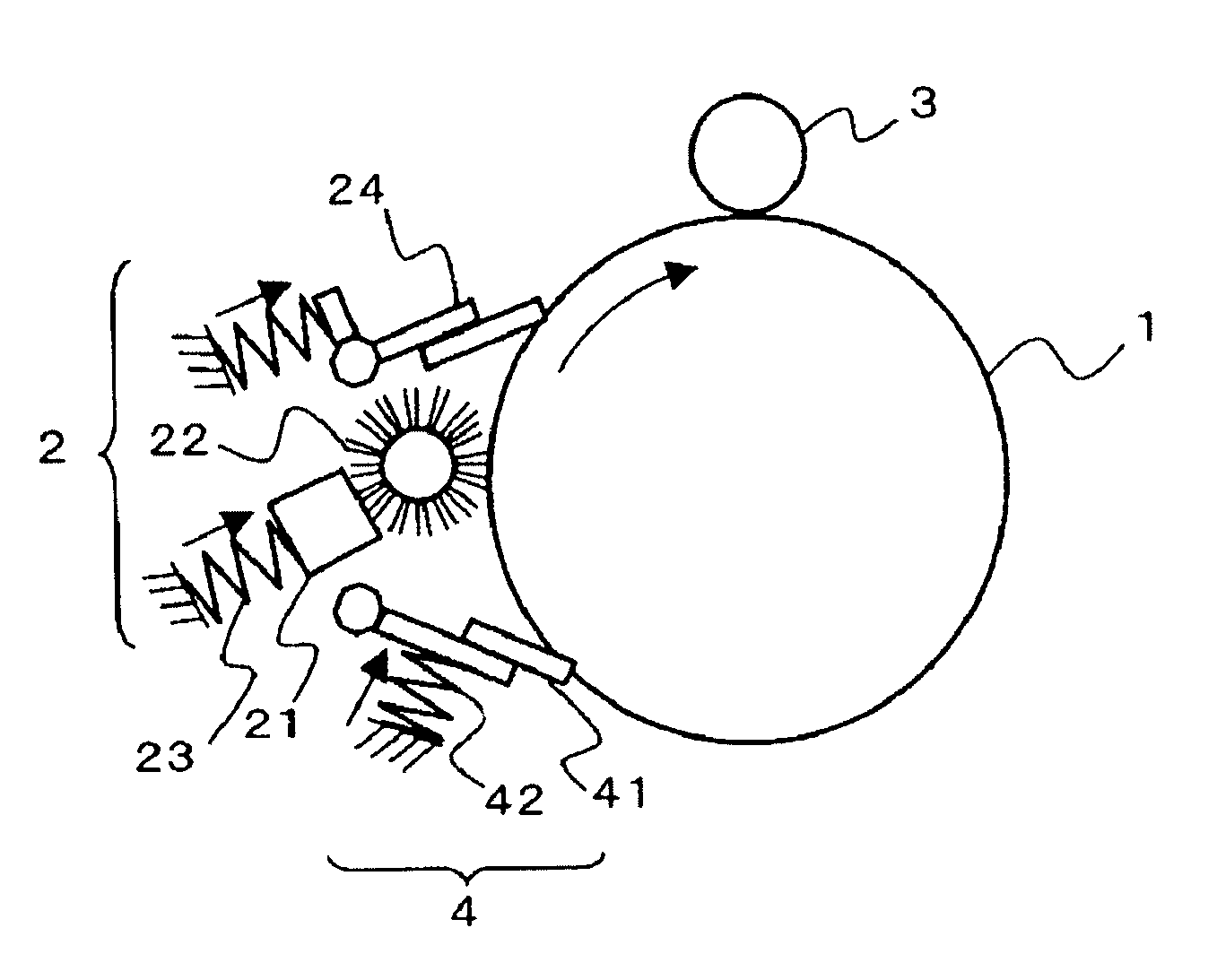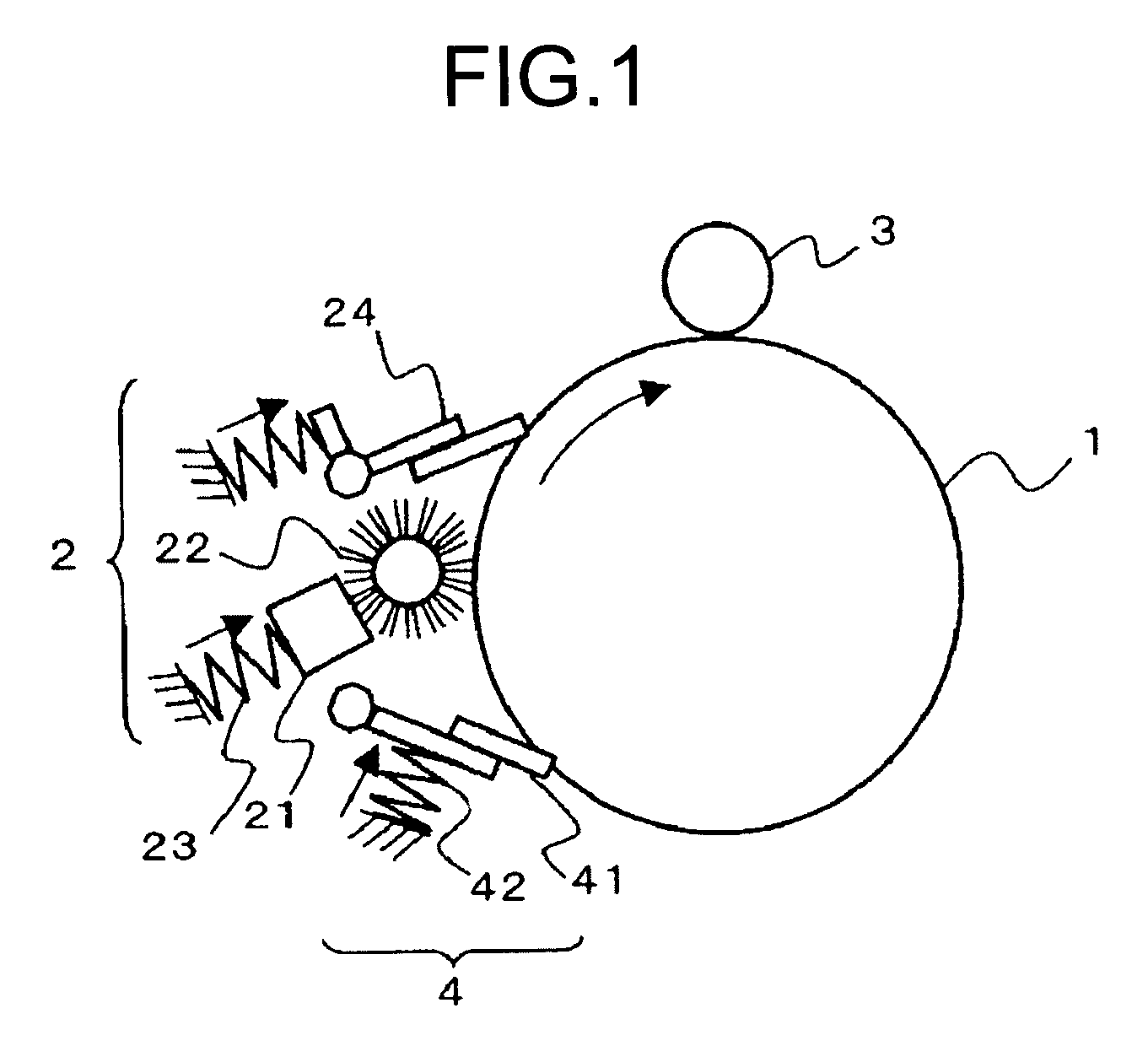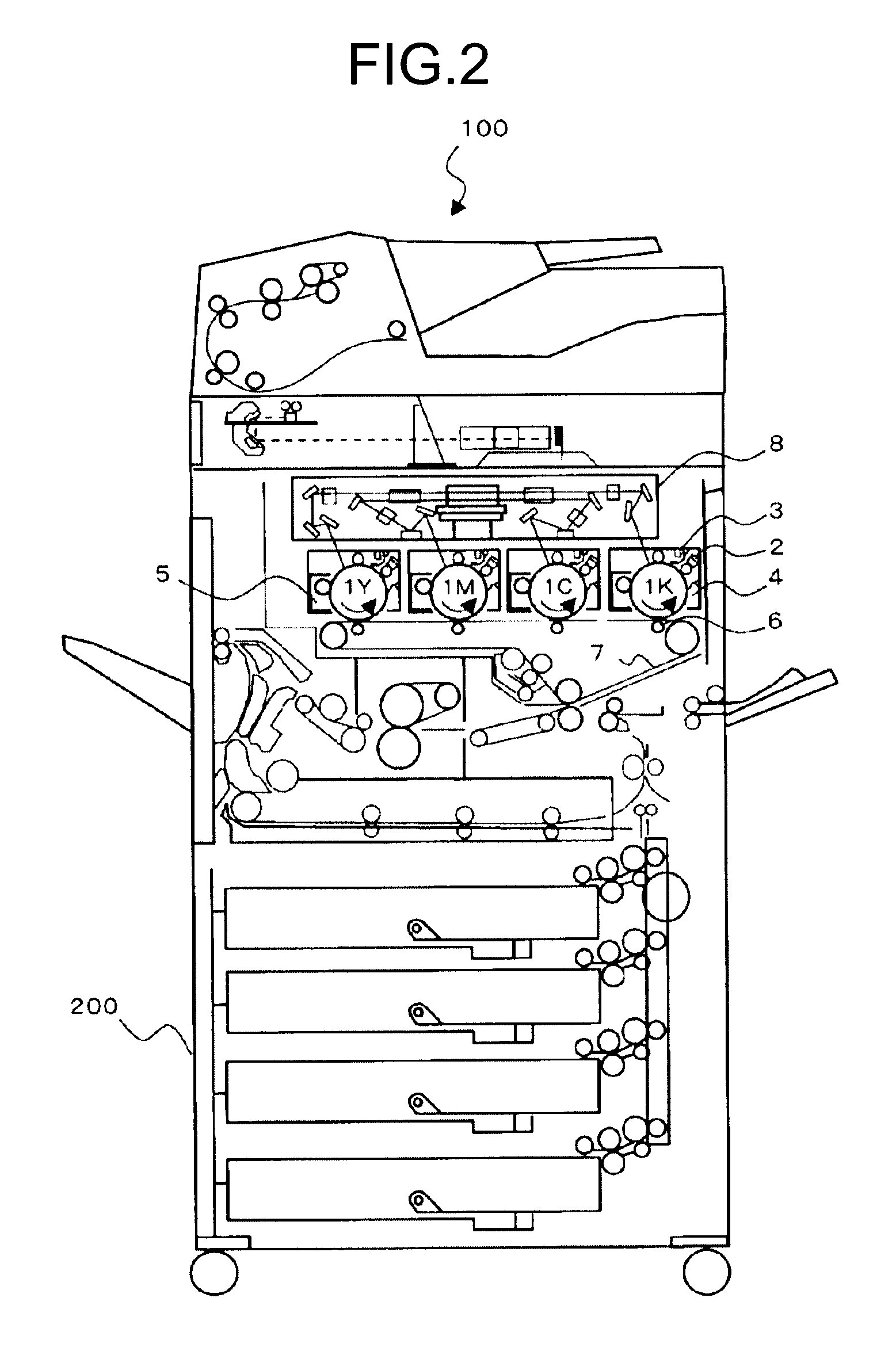Image-carrier protecting agent, protecting-layer forming device, image forming method, image forming apparatus, and process cartridge
a protective agent and image carrier technology, applied in the direction of instruments, coatings, developers, etc., can solve the problems of image failure so-called image blur, image carrier wear and scratching, and preventing uniform charging of image carriers
- Summary
- Abstract
- Description
- Claims
- Application Information
AI Technical Summary
Benefits of technology
Problems solved by technology
Method used
Image
Examples
example 1
[0307]Although examples of the present invention are explained below, the present invention is not limited by these examples.
[0308]Table 1 shows formulae of row materials of examples 1 to 20 according to the present invention.
[0309]Table 2 shows formulae of row materials of comparative examples 1 to 6 according to the present invention.
[0310]In both tables, material name abbreviations are as follows.
[0311]FRW: Fisher Tropsch wax
[0312]IPW: Isoparaffin wax
[0313]MCW: Microcrystalline wax
[0314]NPW: Normal paraffin wax
[0315]D-G: D-glucose dehydration-condensation product (average number of glucoses=90)
[0316]PMM: Polymethyl methacrylate (average molecular weight=1500)
[0317]MSG: Glyceryl monostearate
[0318]Preparation of Protecting Agent 1 for Image Carrier
[0319]The composition of protecting agent Formula 1 shown in table 1 was put into a glass container with a lid, and melted and dispersed while being stirred by a hot stirrer in which temperature was controlled to 160° C.
[0320]The melted c...
example 21
[0330]A process cartridge having the protecting-layer forming device using the protecting agent 1 according to the example 1 was prepared in the following manner. A transfer device, a counter-type cleaning blade, a brush-shaped protecting-agent supplying unit, a trailing-blade type protecting-layer forming unit are arranged in this order from the upstream side around an image carrier (photoconductor). More specifically, the image carrier has a surface layer of which surface contains thermosetting resin (thermal radical reaction type polyfunctional acrylic resin) and of which thickness is 5 micrometers.
[0331]The obtained process cartridge was set in an image forming apparatus (Color multifunction product (MFP): imagio Neo C600 manufactured by RICOH COMPANY, LTD) which was modified so that the process cartridge was able to be incorporated therein). A test on continuous printing of images was conducted by using the image forming apparatus in such a manner that an A4-size document havin...
examples 22 to 40
[0364]The configuration according to the example 21 was not changed except for the protecting agents 2 to 20 used instead of the protecting agent 1, and evaluation was made in the same manner as that of the example 21.
[0365]The evaluation results of the image quality and results as to whether any foreign matter was fixed to the protecting agent are shown in the table 4 and the table 5, while the observation results on how the units were degraded are shown in the table 6.
[0366]It is noted that the paper passing test was conducted up to 500,000 sheets in total by using the image forming apparatuses according to examples 21, 22, and 23. As a result, the images were not affected at all, and respective degradations of the image carrier, the cleaning unit, and the charging unit were hardly found.
PUM
 Login to View More
Login to View More Abstract
Description
Claims
Application Information
 Login to View More
Login to View More - R&D
- Intellectual Property
- Life Sciences
- Materials
- Tech Scout
- Unparalleled Data Quality
- Higher Quality Content
- 60% Fewer Hallucinations
Browse by: Latest US Patents, China's latest patents, Technical Efficacy Thesaurus, Application Domain, Technology Topic, Popular Technical Reports.
© 2025 PatSnap. All rights reserved.Legal|Privacy policy|Modern Slavery Act Transparency Statement|Sitemap|About US| Contact US: help@patsnap.com



